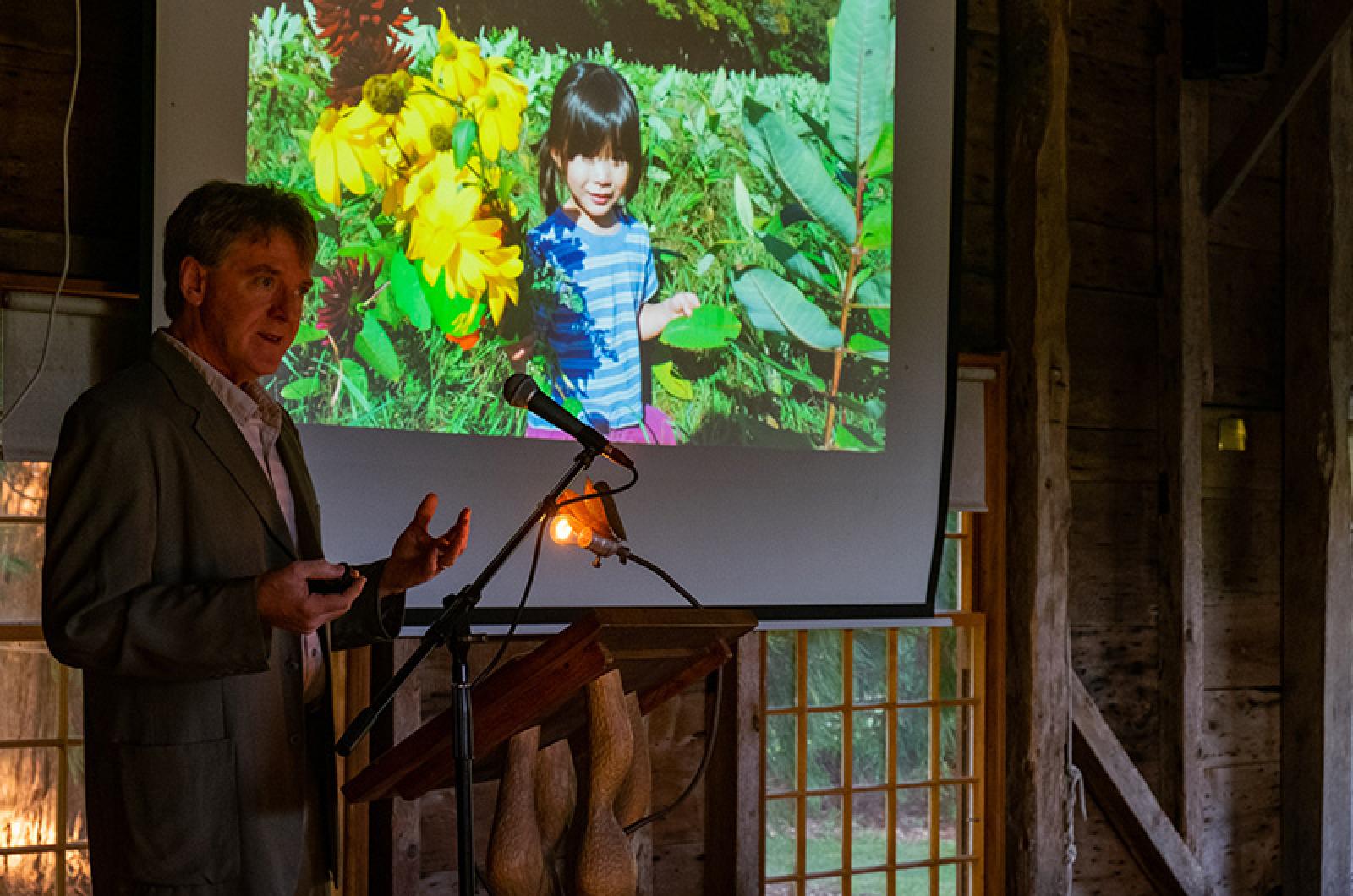Driving down Middle Road or the Edgartown-West Tisbury Road, the Vineyard may seem sparsely developed for a place that more than 100,000 people call home in the summer. An aerial view tells a different story — thousands of homes can be seen concealed from roadside view by surrounding habitat.
Brendan O’Neill, executive director of the Vineyard Conservation Society (VCS), calls the disparity the great illusion. Speaking to a packed Far Barn at the Polly Hill Arboretum on an evening last week, Mr. O’Neill urged the audience to not be fooled into thinking the Island is all lush landscapes with little development.
“The great illusion can lull us into a false sense of security,” he said. “The development we allow is hidden.”
The talk, titled Conservation Outlook 2020, was given as the Polly Hill’s annual David H. Smith Memorial Lecture. Mr. O’Neill spoke about past, present and future efforts by VCS to preserve land from increasing development on the Island.
Looking back at the organization’s 53-year history, he praised the actions of private landowners who worked with VCS to set aside their land for conservation. He pointed to the Mill Brook watershed as one example, where the collaborative and combined effort of private and public entities led to conservation protection in the Mill Brook watershed at places like Waskosims Rock, the Frances Woods Preserve and Seven Gates Farm.
Despite the victories, Mr. O’Neill said about 2,000 acres have been lost to development in the past decade while 1,000 acres were conserved.
“Time is a real adversary here,” he said. “For all the good works, for all the gifts and conservation restrictions, the rate at which development is occurring continues relentlessly and is clearly outpacing the rate of our land protection work.”
He referenced research from the Martha’s Vineyard Commission showing that the Vineyard is currently divided into roughly three areas: conserved land, fully developed land and land potentially available for development.
He said according to the MVC, 80 per cent of the available land on the Vineyard could end up being developed if no action is taken to prevent it.
And the Island population could potentially double, with 7,000 additional houses and 9,000 additional guest houses.
“I don’t think any of us believe that that is an acceptable outcome. The impacts would simply be too severe,” Mr. O’Neill said. “That’s why we’re fighting against the clock to do something about it.”
He said the time and effort required to conserve land makes it an expensive endeavor that VCS cannot manage alone. He said all sectors of the Island must make conservation a priority and urged town governments to look into adopting stronger rules and regulations to curb development.
“There’s an opportunity here for combined, concerted action,” Mr. O’Neill said. “We know the capacity for giving on this Island is great. We’re persuaded that through pure philanthropy, enlightened self-interest and regulation, something can be done.”
He pulled up a photograph of his daughter holding up the skeleton of a beech leaf with only the veins remaining. Much like the leaf losing its form, he said the Island’s rich natural resources could be hollowed out by ignorance or misplaced complacency.
“It’s like the proverbial frog that perishes in the slowly heating pot of water,” he warned. “Let’s not find ourselves surprised.”







Comments (3)
Comments
Comment policy »